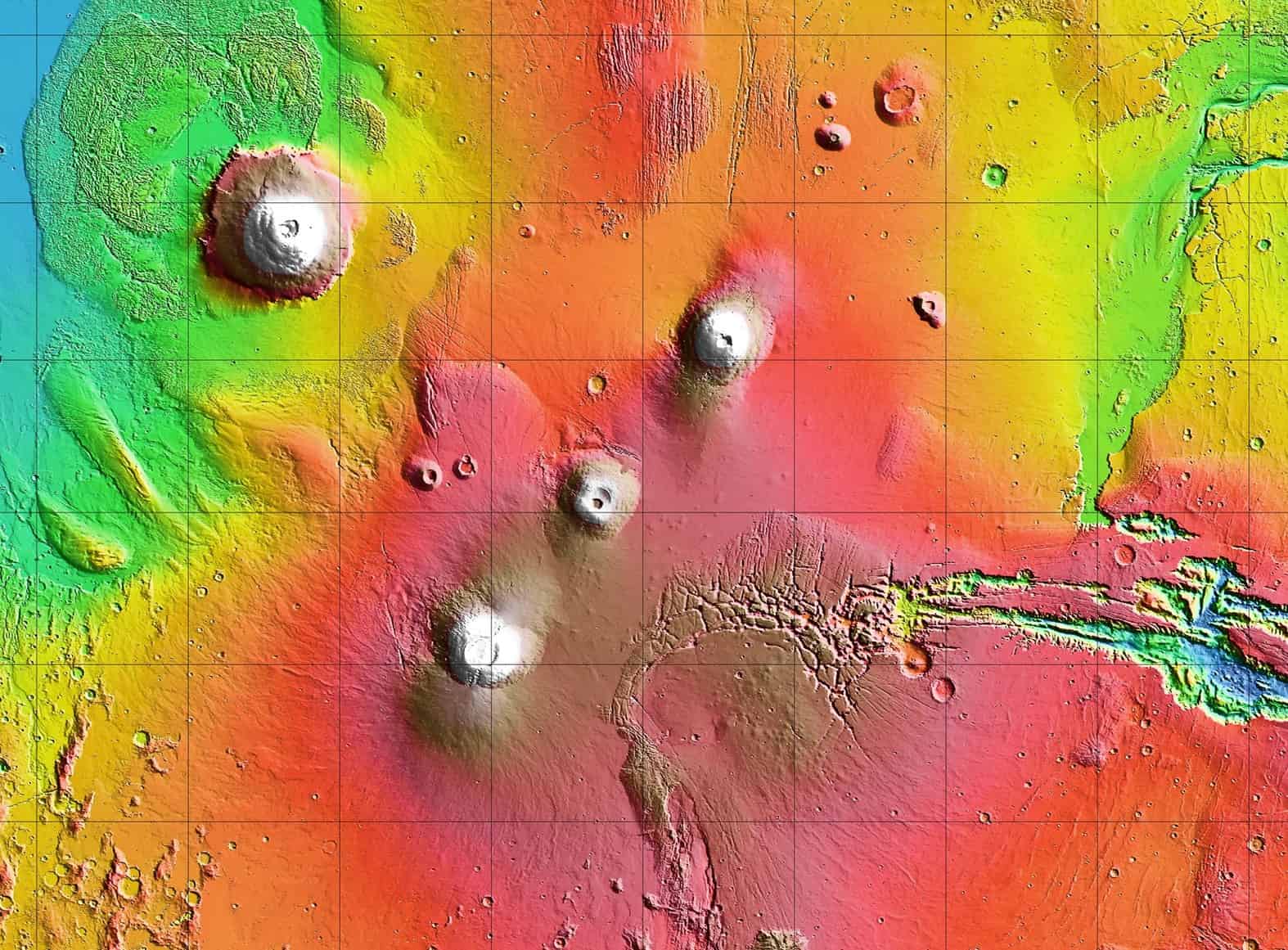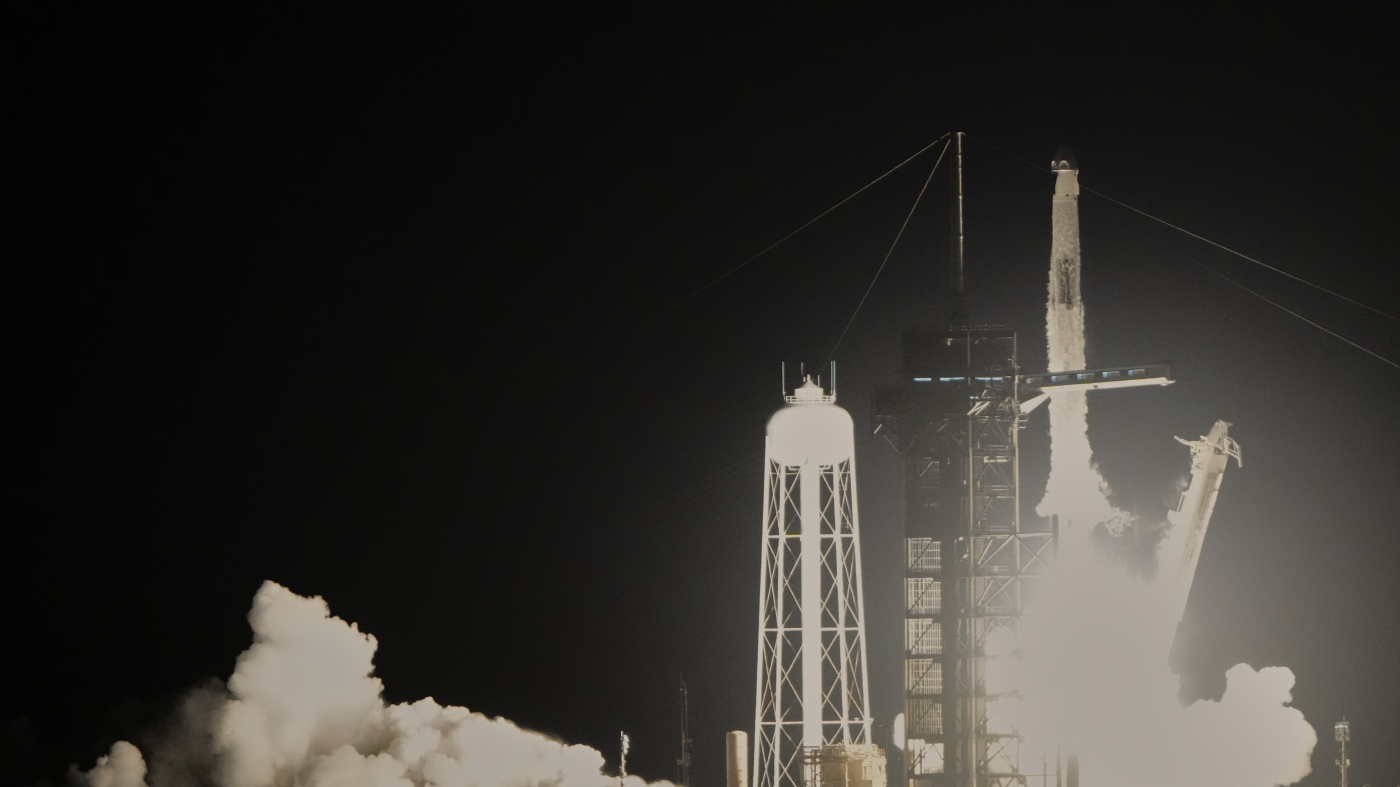NASA Odyssey Captures Unprecedented Mars Volcano Image

PASADENA, CA – In a groundbreaking discovery, NASA’s Mars Odyssey orbiter has captured an image of Arsia Mons, a towering Martian volcano, shrouded in early morning clouds. This remarkable photograph, taken on May 2, offers an Earth-like glimpse of the Red Planet’s dramatic landscape.
Breaking: Unveiling Mars’ Majestic Summit
Just before dawn, the camera aboard the Mars Odyssey spacecraft, situated 240 million kilometers from Earth, snapped a scene reminiscent of terrestrial mountain ranges. The image shows clouds clinging to the sides of Arsia Mons, with its summit rising defiantly above—a sight akin to Everest emerging through Himalayan fog, yet on a planetary scale.
Captured while studying Mars’ atmosphere, the image is the first of its kind, showcasing a volcano on the Martian horizon, dominating a sea of early-morning water ice clouds. “We picked Arsia Mons hoping we would see the summit poke above the early morning clouds,” said Jonathon Hill of Arizona State University, leading the orbiter’s camera operations. “And it didn’t disappoint.”
NASA’s 2001 Mars Odyssey orbiter captured the photo of Arsia Mons, an ancient Martian volcano, while the spacecraft was studying the Red Planet’s atmosphere. Credit: NASA/JPL-Caltech/ASU
Immediate Impact: A New Perspective on Mars
Arsia Mons, standing nearly 20 kilometers tall, towers over Earth’s largest volcano, Mauna Loa. It resides in Mars’ Tharsis region, a vast volcanic plateau also home to Olympus Mons, the tallest volcano in the solar system. Together with Pavonis Mons and Ascraeus Mons, Arsia Mons forms a chain of immense volcanoes aligned along a planetary fissure.
The image’s unique vantage point comes from Odyssey’s maneuver to rotate 90 degrees in orbit, looking toward the Martian limb—the planet’s edge. This technique, new to the orbiter since 2023, reveals Arsia Mons silhouetted against a greenish haze of water ice clouds during Mars’ aphelion, the farthest point from the Sun.
Key Details Emerge: Atmospheric Insights
During aphelion, colder temperatures cause a wide belt of clouds to swirl around Mars’ equator. This aphelion cloud belt, a well-known Martian feature, had never before been observed with a mountain summit piercing through it from this angle. “We’re seeing some really significant seasonal differences in these horizon images,” noted Michael D. Smith, a planetary scientist at NASA’s Goddard Space Flight Center. “It’s giving us new clues to how Mars’ atmosphere evolves over time.”
Water ice clouds form when cold air is forced up the slopes of the volcano, expands, and cools. The clouds thicken during aphelion, revealing how Mars’ atmosphere interacts with its geography.
By the Numbers: Mars Odyssey’s Legacy
Mars Odyssey has been operational for nearly a quarter-century, marking it as the longest-running mission around another planet. Originally launched to map Mars’ chemical elements and minerals, it has evolved into an atmospheric observer, geologist, and cosmic photographer, thanks to its THEMIS camera.
THEMIS, or Thermal Emission Imaging System, captures both visible and infrared light, aiding scientists in locating subsurface water ice—a critical resource for future crewed missions. The camera also images Mars’ moons Phobos and Deimos, and observes seasonal changes in dust and cloud formation.
This image of Arsia Mons is the fourth “limb” observation made by the spacecraft, highlighting its versatility and longevity in Martian exploration.
Expert Analysis: Geological Marvels Revealed
ESA’s Mars Express mission has uncovered dramatic collapse zones on Arsia Mons’ flanks. These pits, some up to 2 kilometers deep, formed as lava drained from chambers beneath the volcano, causing the surface rock to collapse and leaving jagged scars.
For scientists and engineers planning the next generation of Mars missions, these images are more than just aesthetic. Understanding the planet’s weather, cloud formation, and seasonal variation can directly influence the planning of future rover or human landings.
What Comes Next: Future Mars Exploration
The unveiling of Arsia Mons from this unique perspective provides valuable data for future missions. As scientists continue to analyze these images, they gain deeper insights into Mars’ atmospheric dynamics and geological history, paving the way for more informed exploration strategies.
With Mars Odyssey continuing its mission, the scientific community eagerly anticipates further discoveries that may unlock the secrets of the Red Planet’s past and guide humanity’s future endeavors beyond Earth.






